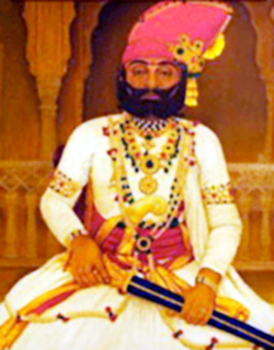 The concept of Modern Astronomy was brought in India with the coming of the Europeans. The Europeans combined their knowledge with the concepts of Ancient Indian Astronomy and gifted India with new field of Astronomy with all kinds of modern appendages. The long period of exchange in ideas with the west brought about several modern ideas in the traditional system of Indian Astronomy. The result was the discovery of a class of texts called Siddhantas, which had a better scientific approach and more comprehensive treatment.
The concept of Modern Astronomy was brought in India with the coming of the Europeans. The Europeans combined their knowledge with the concepts of Ancient Indian Astronomy and gifted India with new field of Astronomy with all kinds of modern appendages. The long period of exchange in ideas with the west brought about several modern ideas in the traditional system of Indian Astronomy. The result was the discovery of a class of texts called Siddhantas, which had a better scientific approach and more comprehensive treatment.
The land of India had undergone several conquests and reign of a number of foreign rulers. As a result all of them who had ruled India had left some or the other influence in the land. During the eighth century it was the Arabs who had conquered India. Consequently it was Islamic rule which was extended to India. Not only did the Arabs accept the advancements that had come about in India in the field of science but also they enriched the country with their own knowledge and theories. It was with their rule that Persian or Arabic Astronomy seeped in. They developed the construction and working of astrolabe. Many of the Indian astronomers had used the instrument a several times.
In the contemporary times a number of observatories were built in India in order to revive the astronomical learning. Another important reason which brought about revival as well as advancement of Astronomy of India was exchange of ideas from various countries.
Jaya Singh had built around five observatories in India in places like Delhi, Jaipur, Mathura, Ujjain and Varanasi. These observatories later came to be known by the name Jantar Mantar. It was Jaya Singh who developed contacts with the Jesuit missionaries in India. As the contact with the Jesuit missionaries flourished India came to know about the telescope. It is true that Jaya Singh tried hard to revive the astronomical tradition in India but still his efforts remained limited to medieval India. In fact Modern Indian Astronomy flourished with the coming of the European merchants and missionaries. The merchants of the East India Company brought in several modern Astronomical instruments along with them which brought about a lot of modernization in the field of astronomy.
The British astronomers in the beginning had set up an observatory in Chennai. In the observatory of Chennai a lot of astronomical experiments were carried out. They had also set up an observatory in Kodaikanal to study the movements of the sun.
It was true that the trend of modernism in the field of astronomy had started with the coming of British but the development had not abated with the departure of the British. Even after Independence many modern instruments started crowding the observatories that had been built in India.
Not only modern instruments came in but also a number of observatories were set up in India after Independence. The first observatory after independence was set up in 1954 at Varanasi. Later this observatory was shifted to Nainital in the year 1961.
In India before Independence there were no radio telescopes but after Independence radio astronomical facilities exist in places like Ooty, Bengaluru, Gaurubidanur, Ahmedabad, and at Khodad near Pune. The first radio telescope was set up in Ooty in the year 1970. The radio telescopes are generally used to study the radio waves, pulsars and supernova remnants.
In the field of cosmic rays Indian Astronomy has done a wonderful job. Dr. Homi Bhaba had been a pioneer in this field. In the last few years a lot of advancement has also come about in the field of X-ray astronomy, infrared astronomy and atmospheric science.
Moreover in the present age the study of astronomy is highly coveted. A number of popular and universities of worth are providing degrees in the field of astronomy. Around a dozen universities in India are providing degrees in Astronomy and Astro-Physics. In order to make the knowledge of Astronomy propagated by the Universities more effective an Inter-University Centre for Astronomy and Astrophysics had been established in Pune in the year 1988.
Hence it can be concluded saying that it was with Sawai Jaya Singh India had come in contact with modern European astronomy. But later on with passing time it had advanced in the field of Astronomy with its own initiative. Presently India has all first class expertise and knowledge in the field of Astronomy.















